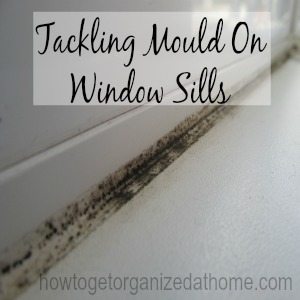Say Goodbye to Mould on Window Sills Once and for All

Mould is a common household problem these days � one that can be very difficult to get rid of once it has taken root. If you're trying to tackle the mould on your window sills, you might want to check out these very informative tips that will help you get rid of mould problems and prevent them from coming back. First of all, it's important to understand what mould is before you try to get rid of it. Basically, mould is a broad term for fungi that grows on wet or moist building materials � like windows, for example, and bathtubs, tiles, grout, and so on. It comes in all different colours, and sometimes has no colour at all. Most moulds tend to have a �musty� scent and can make your home toxic. Black mould is the most toxic of all and it's easily identified � it's like a black grainy stain that grows and is nearly impossible to get rid of. Mould is very much alive and can reproduce by sending countless microscopic spores into the air that land on surfaces, take root, begin to grow and release even more spores. This is where it becomes dangerous because humans can inhale these spores and become sick with allergies, respiratory issues, and all kinds of other symptoms that may be difficult to identify. This is why it's critical to clean mould as soon as you find it, before it can do any damage.
What exactly causes the mould to grow so prolifically around window sills? The short answer is excess moisture. If there is not enough air flow in the room, especially around the window area, condensation can build up. This is very common in the winter time, when you have the heat on indoors and the windows are cool because it's cold outside. When the warmer air currents collide with the cool windows, moisture develops and the windows begin to �sweat�. If this moisture builds up on the windows for a few hours at a time, especially overnight, mould can � and probably will � start to grow in these areas. Mould thrives on dampness. The worst possible scenario � and so many people have it these days � is to have a heater directly underneath a window! This is the perfect formula for mould growth because the heat from the heater rises directly to the cool windows above, and moisture begins to form almost immediately. When you have this kind of situation, it's a good idea to invest in a dehumidifier that will help remove excess moisture from the air. It's also critical that you open the windows from time to time, to allow for air circulation. When it's warm and sunny outside, open the windows. If you've just taken a shower and notice condensation on walls and windows, turn on the bathroom exhaust fan � and open a window for a few minutes. These simple procedures will go a long way in preventing mould growth in your home and on the window sills.
As for mould clean-up, there are several routes you can take � each one depending on the mould situation you are addressing. For example, if the mould is on the window itself, then you can easily use a blend of vinegar, dish soap, and water to clean it away. If the mould is on a non-porous surface, you are also in luck because it hasn't had a chance to dig its roots in and can easily be removed with bleach. If you're dealing with deep-seated mould in a porous area, then you can try using Borax to clean it but make sure the Borax dries completely before you try wiping it away � otherwise, you can spread the mould spores even further. These excellent mould-busting tips come from the �How to Get Organized� website where you can find the full and complete list of home-made mould-killing mixtures � and one very special, all-natural ingredient that will keep mould from returning.
Learn MORE / Get RECIPE at How To Get Organized at Home
To help with slow website load, we have put all photos for this article here: View photo gallery.








